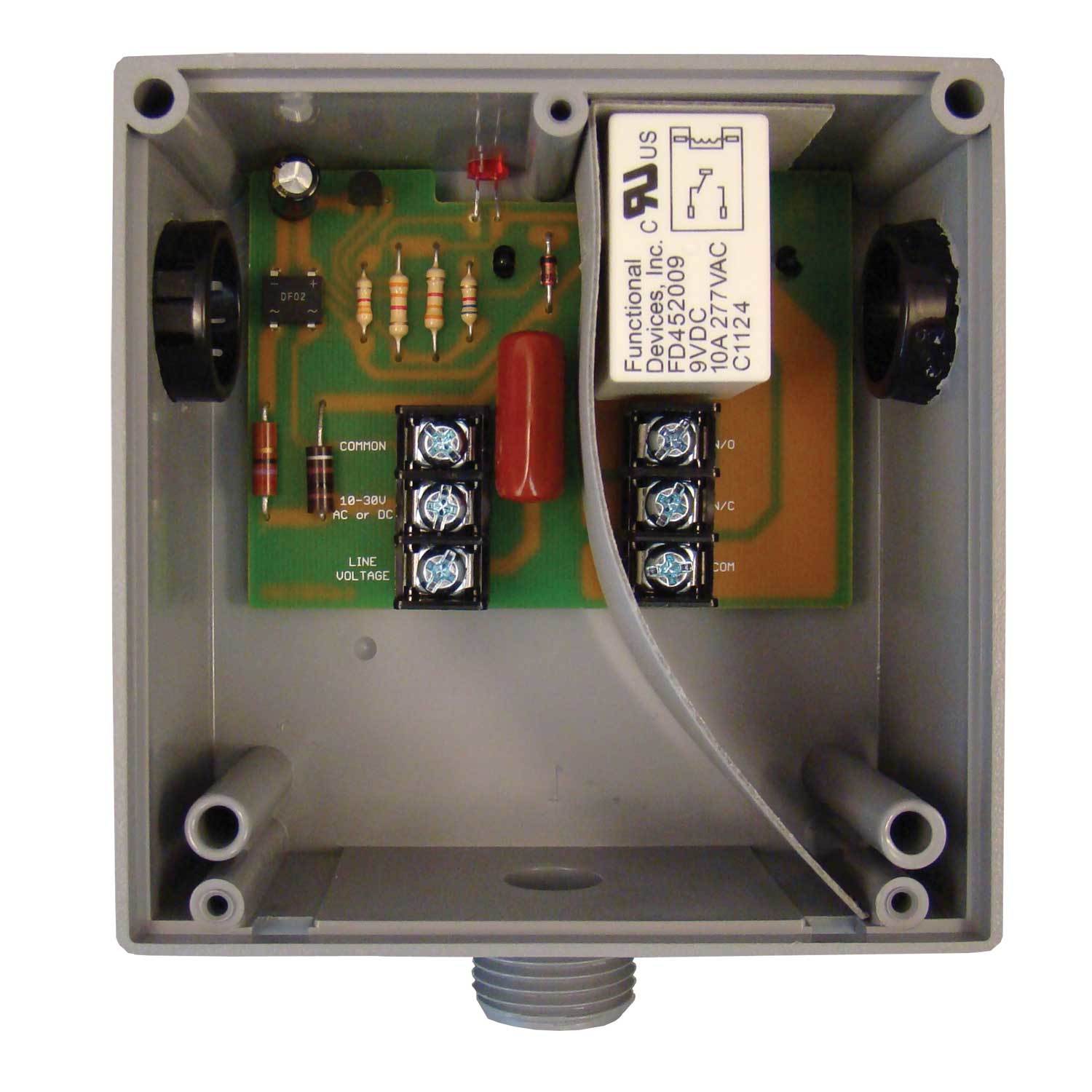Functional Devices - RIBU1CW
One Relay Does It All
I have recently come across a pretty cool product for anybody interested in home automation. I am, in fact, using one of these devices myself to control the clothes dryer booster fan that I recently added to my crawl space. It is the Functional Devices RIB (Relay-In-Box) RIBU1CW:

http://www.functionaldevices.com/building-automation/display.php?model=RIBU1CW
In a nutshell, this device is basically the coolest electrical relay I have ever seen! Functional Devices and others have all kinds of other electrical relays. But, what makes this particular product so cool is it's versatility!
Electrically, the input side (i.e. coil) can accept multiple types of voltage (low/high, AC/DC):
- 10-30 VDC
- 10-30 VAC
- 120 VAC
Most relays accept a single kind of voltage (iei. 24 VDC, 120 VAC, etc.). The fact that this accepts many of the most common voltages provides some awesome flexibility. This relay can be controlled using so many different power sources:
- DC "wall wart" transformers of varying voltages (you probably have a few dozen of those in a box somewhere)
- 24 VAC door bell transformer
- 12 VDC surveillance system power source
- 120 VAC household voltage, such as a switch, switched outlet, outdoor "nightime" photoeye
If you need 208 - 277 VAC for the input coil, consider the similar RIBH1CW.
Next, consider that it is a "physical" relay instead of a "solid state" relay, and that it has both Normally Open (NO) and Normally Closed (NC) contacts. That means the output can also be used to complete various kinds of electrical circuits, such as low/high, AC/DC. The Form-C dry contact is rated for multiple common voltages:
- 15A @ 28 VDC
- 15A @150 VAC (resistive and inductive)
- 10A @ 277 VAC (resistive)
See the spec sheet for the full list of contact ratings.
http://www.functionaldevices.com/pdf/datasheets/RIBU1CW.pdf
Physically, this relay is mounted in it's own box. You don't have to worry about finding the correct socket and/or mounting it in an enclosure. It is ready to use right out of the box.
Then, consider that it has a threaded stud for mounting it directly onto a knockout hole of an electrical junction box. That feature is really cool, and makes install a breeze. You can choose to mount it using the included screws instead, if desired.
And, it also has a circuit separator to physically separate the input side from the output side. Therefore, if you do need to utilize different voltages on the input side and output side, you do not have to worry about any current from the "high voltage"side shorting over to the "low voltage" side!
Finally, concerning the knockout stud and circuit separator, you can configure which wiring is accessible via the knockout stud. You can take the circuit separator out if both sides are working on the same voltage, or you can re-position the circuit separate to expose either the input side or the output side to the knockout stud, depending on which side the "high voltage" side.
When you take all of that into account, this is an incredibly versatile relay that could be used in most of your home automation needs!
Programmer, Engineer